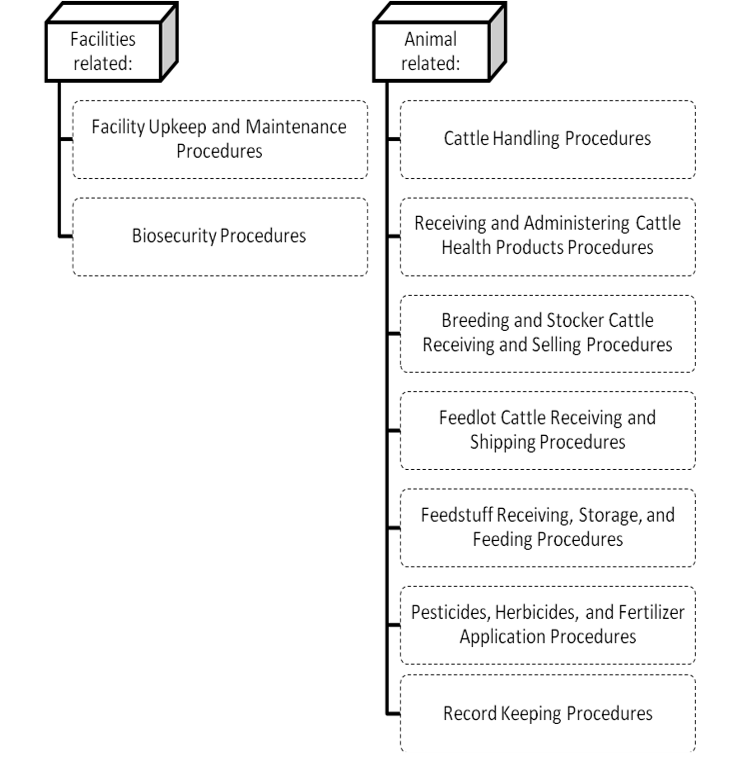In order to understand all the elements related to livestock treatments, we have adapted information from the Samuel Noble Roberts foundation to create a comprehensive “best practice” checklist of all the procedures and elements to consider when administering livestock treatments for beef livestock.
The main areas included in the checklist are as follows:

Livestock medicines are an important tool in the treatment and prevention of diseases. Correct treatment methods assure the safety of food products and insure an effective response to treatment.
Consider the following points before treating livestock.
Drug Selection
Select the correct therapy. Consult your veterinarian for advice on the correct medication, the route of treatment, the treatment dosage, the time between treatments and the number of treatments. Veterinarians should leave clear written instructions with the herd owner identifying the treated animal and giving information on the treatment protocol. The veterinarian also plays an important role in monitoring the response to treatment.
Treatment Method
Treatment must be given correctly to be effective and to prevent complications. Use the following guidelines to develop good treatment habits.
- Wash your hands before and after handling livestock medicines.
- Use proper equipment: Choose the correct syringe and needle size for the dosage and the type of injection to be given.
- For intramuscular injection use a 1½”, 16 or 18 gauge needle to insure the drug reaches into the muscle and not just under the skin. Before injecting, pull back on the plunger to ensure the needle tip is not in a blood vessel. Select appropriate injection sites with the help of your veterinarian. Read the label for the maximum amount to be injected in one site.
- For subcutaneous injection use a ½” to 1”, 16- or 18-gauge needle. Check that the needle tip is moveable. Inject a small amount of drug to see if a bulge is formed in the area of the needle tip. This will verify that the needle is under the skin and not in the muscle. Inject only in sites recommended by your veterinarian.
- Inject only in clean body sites.
- Use clean equipment. Singly used, sterile, disposable needles and syringes are preferred.
- Give repeated injections in different body sites.
- Before infusing antibiotics into the udder, wash the teat and your hands and dry with singly used paper towels. Disinfect the teat with an alcohol swab provided in the medication package. Avoid touching the infusion canula at the end of the treatment tube. Only use single dose infusion productions in disposable syringes. Dip the teat after infusion of medication.
Dosage Calculation
To calculate the correct dosage, you must know the weight of the animal and the dosage rate. For example, treat a 600 kg cow with procaine penicillin.
Prescription on the label: dosage = 2.5 ml per 100 kg of body weight once a day.
Calculation: 600 kg bodyweight divided by 100 x 2.5 ml = 15 ml
One millilitre (ml) and one cubic centimetre (cc) represent the same volume and are interchangeable in calculating drug dosages.